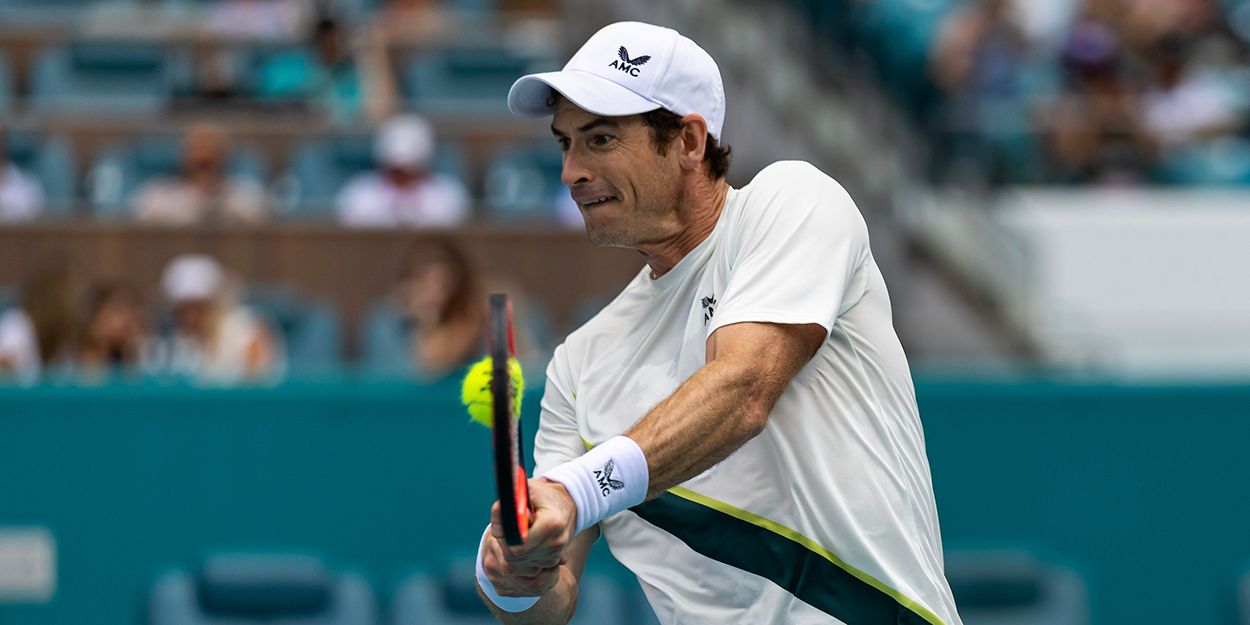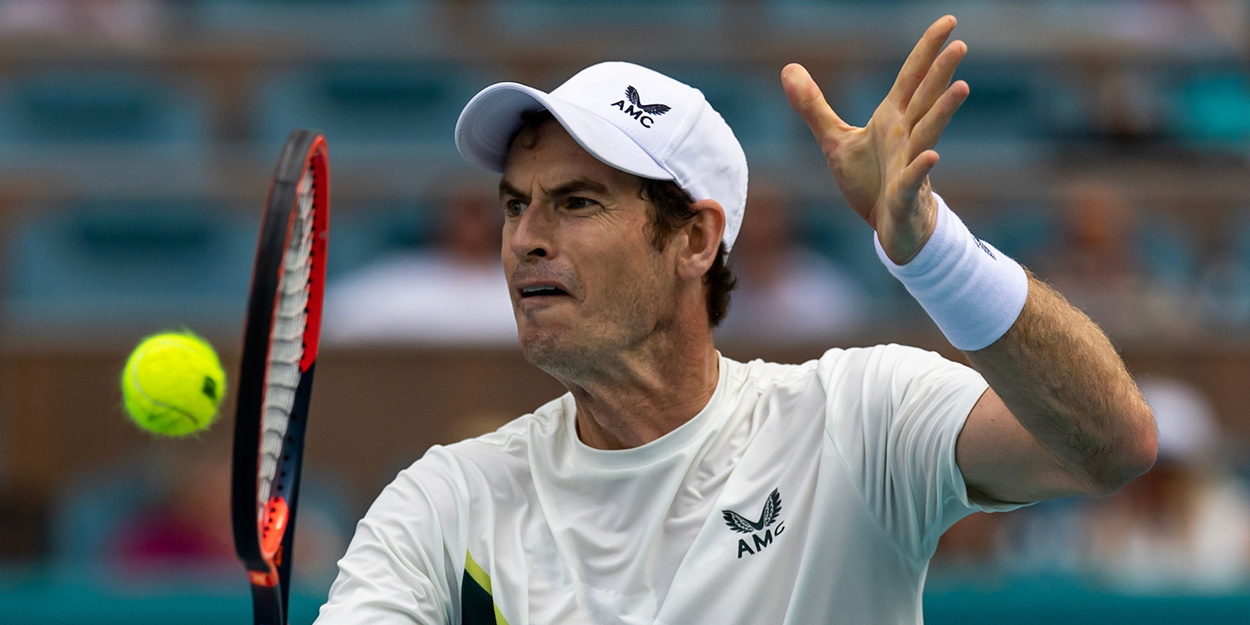
ANALYSIS: What went wrong for Andy Murray in Miami?
In his latest expert analysis for Tennishead, Brain Game Tennis creator and top coach Craig O’Shannessy picks the bones out of another disappointing Miami defeat for Andy Murray.
Andy Murray has a green light to play as much offense as he wants in the twilight of his illustrious career.
See the ball, hit the ball. Smash it around the court and make the other guy do the chasing. Enjoy the freedom of competing and dictating to younger foes.
Unfortunately, it’s not playing out that way for the 35-year-old Brit.
I was courtside for Murray’s 6-4, 6-2 loss to Daniil Medvedev in round one of the Miami Open last year. I was also courtside for Murray’s 6-4, 7-5 loss to ATP No. 76, Dusan Lajovic in round one this year.
They may as well have been the exact defensive-driven match. Not enough giddy up, not enough net play, not enough spark from the back of the court to make the opponent genuinely uncomfortable.
Below is a link to what I wrote after last year’s loss to Medvedev. I suggest you read it first, as it will give context to Tuesday’s loss to Lajovic.
Key reasons for Murray Miami loss
Here are five things that stood out to me from the Lajovic loss.
Baseline Under-Performance
Murray has made the baseline his domain throughout his career. He loves to grind and inflict pain from the back of the court. The pain, unfortunately, is gone.
Baseline Points Won
- Lajovic = 48.7% (38/78)
- Murray = 42.5% (34/80)
Murray hit 201 groundstrokes in this match. He only produced three winners. That’s a game plan gone wrong. Murray hit 121 forehands, including 49 as a run-around forehand in the Ad court.
Three of those run-around forehands were winners. That means Murray hit 152 regular forehands (standing in the Deuce court) and backhands for no outright winner.
To be fair to Murray, he did extract 17 errors from Lajovic from those 152 shots. But winners can never be zero from 152.
Murray registered 16 winners overall, with six being aces, one from a forehand return, and the rest at the net. We will get to that in a minute…
The bottom line is that there is a gear in Murray’s baseline game that he is not reaching for. Too many backhands were hit neutral cross court. Too many forehands lacked authority and disrespect.
There is zero downside to playing up in the court, hitting the ball hard, and leaving those cards on the table for the remainder of his career. No regrets.
Net Points Won
Murray is extremely competent at net. His volleys and overheads are rock solid. But he is too reluctant to leave the security blanket of the baseline to chase a much higher winning percentage at the front of the court.
Net Points Won
- Lajovic = 83% (10/12)
- Murray = 80% (8/10)
It’s mind-boggling that Murray would only average coming to the net five times per set. If you don’t like the net at all, you will still be dragged in there five times a set to finish a point.
What also defies logic is that Murray won such a high percentage (80%) and didn’t try to do it more. Murray should have come to the net 15 times a set, or 30 for the match. He came in a third of that, significantly contributing to the loss.

Drop Shots
Carlos Alcaraz broke through in Miami in 2022 and won the title. He hit 50 drop shots in six matches, averaging 8.3 per match. He won an impressive 70% (35/50) of them.
Drop shots are also in the wheelhouse of Murray’s game. He loves to be crafty and use guile, touch, and angles to win points. He likes to have his opponent on a string. The puzzling part of Murray’s loss to Lajovic is that he only hit three drop shots, winning one.
Andy Murray is a better player when he is pushing players back with penetrating groundstrokes and pulling them forward with deft drop shots. He can’t take that strength off the table.
Backhand Down The Line
Murray made the first 23 backhands of the match. You can look at that as both good and bad.
On one hand, his “shield’ is behaving perfectly by not missing. On the other hand, it is not doing enough to make the opponent miss.
Murray played too safe and too predictable with his backhand versus Lajovic. He didn’t step in and look to go big down the line like he sometimes could have done. There has to be fear or repercussions if the ball lands short to Murray’s backhand.
Ditch The Lob
Murray has one of the best lobs in the game. In fact, I just used him as an example in my recent webinar about drop shots and lobs. He goes to it too often, though, mainly because his court position is too deep in the court.
Murray hit 14 lobs in this match, which is probably 10 too many. Of those 14, he won the point just three times. He should try playing practice sets where the lob is not allowed. It will spill over to a more aggressive mindset and better court position around the baseline.
What went wrong for Andy Murray in Miami?
This is what I wrote after the Medvedev loss last year.
“The problem for Murray is that he played the match the way he wanted to play it. Not how Medvedev didn’t want it. He needs to come out of his comfort zone and play bigger. Play more aggressively. Take on some more risk returning serve. He likes to move the battle to the end of the rally. It’s way better for him to move it to the start and be the first player to throw the proverbial punch.”
Twelve months on, it’s simply a copy and paste of the same losing result on the same court. Murray still has the possibility of glory days in the future. If that is going to happen, though, he can’t organize his side of the court like he did in Miami in the last two years.
Read Craig’s first analysis article for tennishead where he reveals the surprisingly small percentage of points won you should target in each match.
Read Craig’s second article for tennishead which focusses on how to detach your emotions to play better tennis.
Read Craig’s third article for tennishead which teaches us about our sword and our shield.
 Craig O’Shannessy is the creator of Brain Game Tennis. For 20 years he’s been involved in tennis as a coach to players like Kevin Anderson and also with Dustin Brown when he famously beat Rafa Nadal at Wimbledon.
Craig O’Shannessy is the creator of Brain Game Tennis. For 20 years he’s been involved in tennis as a coach to players like Kevin Anderson and also with Dustin Brown when he famously beat Rafa Nadal at Wimbledon.
More recently Craig’s been working as a match analyst at Wimbledon and for the ATP Tour. He has also used the unique insights from his match analysis software dartfish to guide players such as Novak Djokovic with analysis of opponents and performances.
Craig has been writing for tennishead magazine for a number of years and is now working with us on this series of features aimed at using his statistical skills to help you improve your tennis game.
Visit BrainGameTennis.com for your free guide on the ‘8 ways to force an error’ and to find out more about Craig, the world’s best tennis strategy coach.
![]() Join >> Receive $700/£600 of tennis gear from the Tennishead CLUB
Join >> Receive $700/£600 of tennis gear from the Tennishead CLUB
![]() Social >> Facebook, Twitter & YouTube
Social >> Facebook, Twitter & YouTube
![]() Read >> World’s best tennis magazine
Read >> World’s best tennis magazine
![]() Shop >> Lowest price tennis gear from our trusted partner
Shop >> Lowest price tennis gear from our trusted partner


